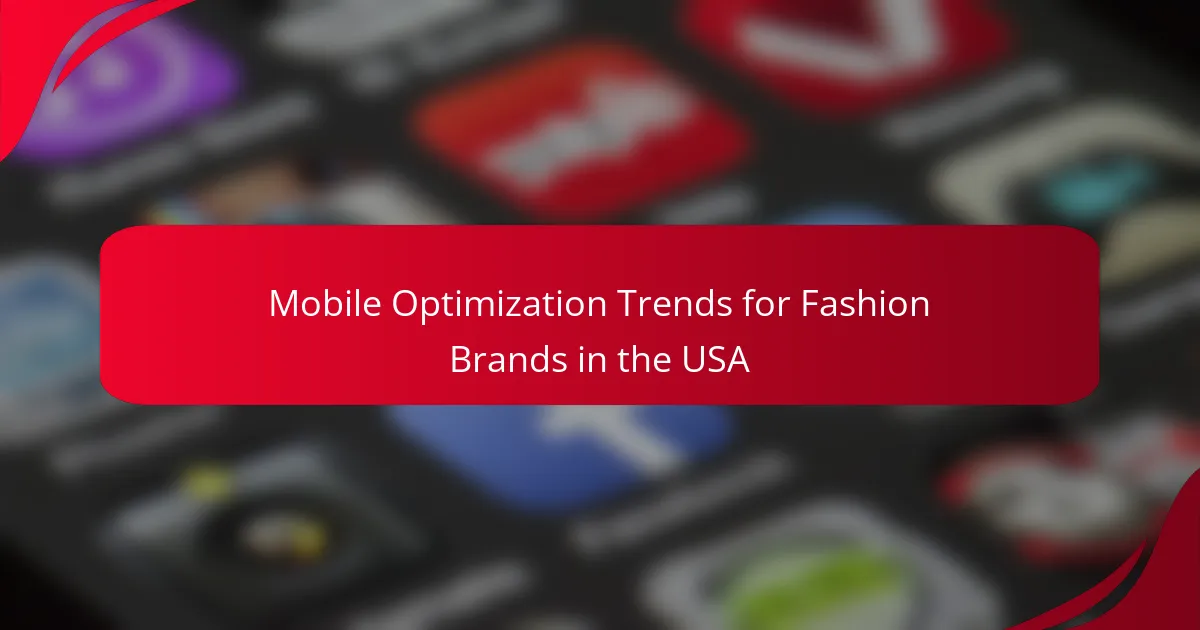Analytics tools play a crucial role in measuring the SEO success of fashion brands in America by delivering essential data-driven insights. By tracking performance metrics such as website traffic, keyword rankings, and audience behavior, these tools empower brands to optimize their online presence and enhance visibility. Understanding these metrics allows fashion brands to make informed decisions that drive engagement and growth in a competitive market.
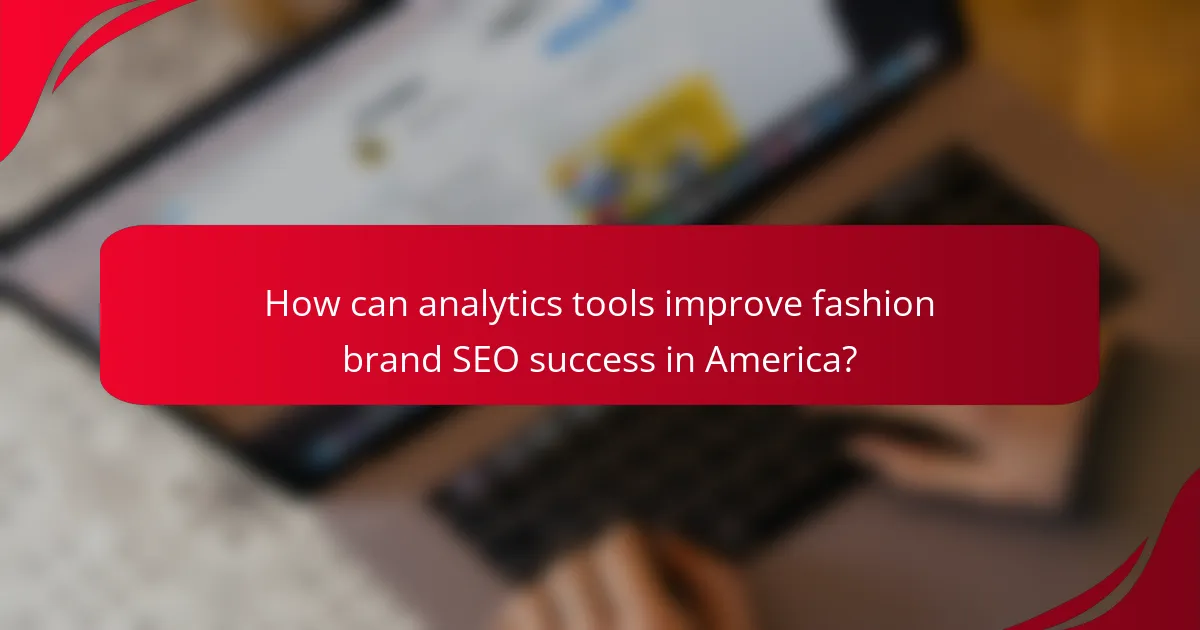
How can analytics tools improve fashion brand SEO success in America?
Analytics tools enhance fashion brand SEO success in America by providing data-driven insights that inform strategies for optimization. These tools help brands track performance, understand audience behavior, and refine their online presence to improve visibility and engagement.
Enhanced keyword tracking
Enhanced keyword tracking allows fashion brands to monitor the effectiveness of their targeted keywords in real-time. By using tools like Google Analytics or SEMrush, brands can identify which keywords drive traffic and conversions, enabling them to adjust their content strategy accordingly.
Brands should focus on long-tail keywords relevant to their niche, as these often have less competition and can lead to higher conversion rates. Regularly updating keyword lists based on performance metrics is crucial for maintaining SEO success.
Improved site performance analysis
Improved site performance analysis helps fashion brands understand how their website functions in terms of speed, usability, and technical SEO. Tools like Google PageSpeed Insights and GTmetrix provide actionable insights on load times and mobile responsiveness, which are vital for user experience and search rankings.
Brands should aim for a site load time under three seconds and ensure their website is mobile-friendly. Regular performance audits can help identify issues that may hinder SEO efforts, such as broken links or slow-loading images.
Better audience insights
Better audience insights enable fashion brands to understand their target demographics, preferences, and behaviors. Analytics tools like Google Analytics and social media insights can reveal valuable data about user engagement and traffic sources.
Brands should segment their audience based on behavior and demographics to tailor marketing strategies effectively. Understanding peak engagement times and preferred content types can significantly enhance SEO efforts and overall brand visibility.
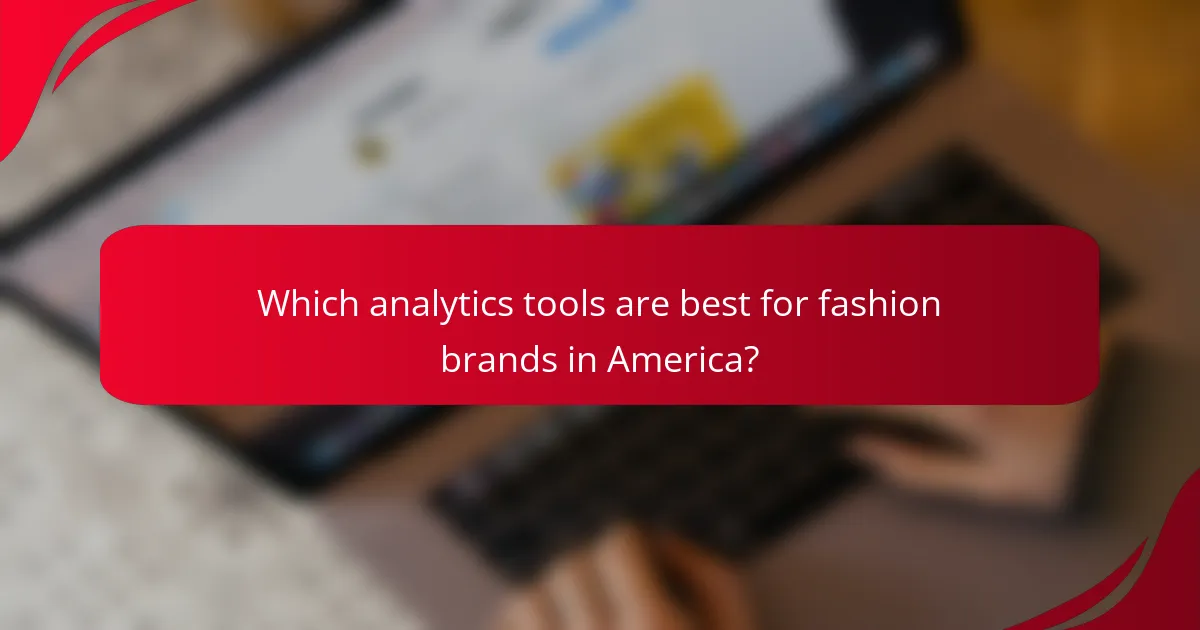
Which analytics tools are best for fashion brands in America?
Fashion brands in America can benefit from several analytics tools that help measure SEO success. The right tools provide insights into website traffic, keyword performance, and overall online visibility, enabling brands to make data-driven decisions.
Google Analytics
Google Analytics is a fundamental tool for tracking website performance and user behavior. It offers detailed reports on traffic sources, user demographics, and engagement metrics, which are crucial for understanding how visitors interact with a fashion brand’s site.
To effectively use Google Analytics, set up goals that align with your business objectives, such as purchases or newsletter sign-ups. Regularly review the data to identify trends and areas for improvement, ensuring you adapt your SEO strategies accordingly.
SEMrush
SEMrush is a comprehensive SEO tool that provides insights into keyword rankings, competitor analysis, and backlink profiles. For fashion brands, it can help identify high-performing keywords and track changes in search visibility over time.
Utilize SEMrush’s site audit feature to uncover technical SEO issues that might be affecting your website’s performance. This tool also allows you to monitor competitors, giving you a strategic advantage in the fashion market.
Ahrefs
Ahrefs is known for its robust backlink analysis and keyword research capabilities. It helps fashion brands understand their link profile, which is essential for improving domain authority and search rankings.
With Ahrefs, you can explore content gaps and identify opportunities for new keywords. Regularly check your website’s health score to ensure optimal performance and address any issues that could hinder your SEO efforts.
Fashion Metrics
Fashion Metrics is tailored specifically for the fashion industry, offering insights into consumer behavior and market trends. This tool helps brands analyze sales data alongside SEO metrics to understand how online visibility impacts sales performance.
By integrating Fashion Metrics with your existing analytics tools, you can gain a holistic view of your brand’s performance. Focus on key performance indicators (KPIs) such as conversion rates and customer acquisition costs to refine your marketing strategies effectively.
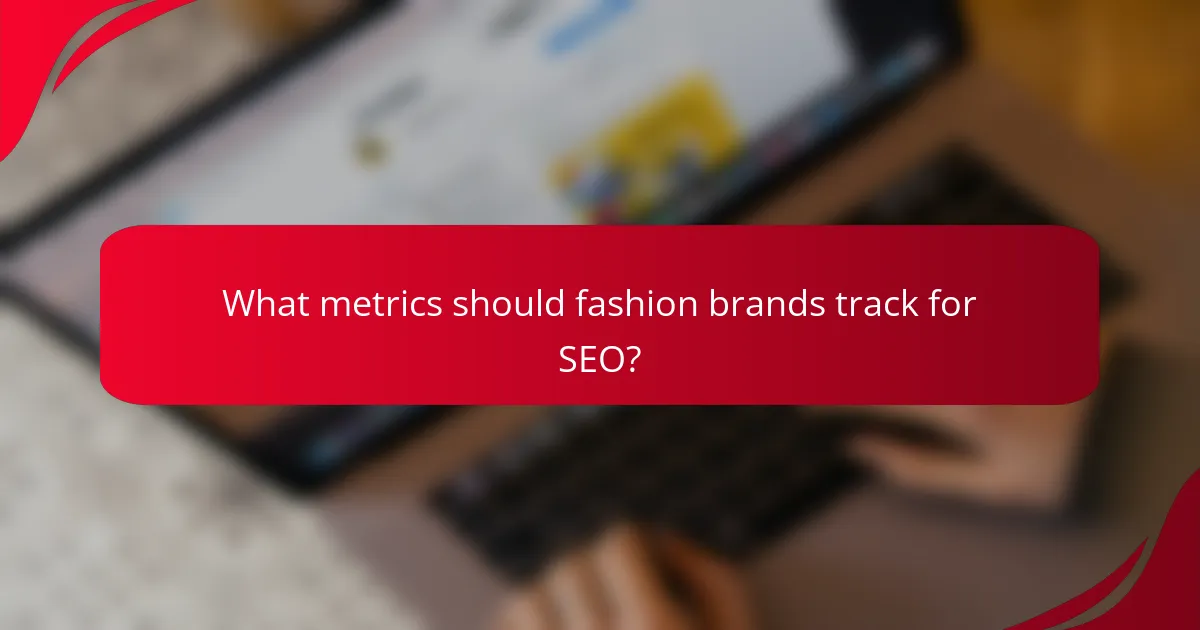
What metrics should fashion brands track for SEO?
Fashion brands should track several key metrics to measure their SEO success, including organic traffic growth, keyword rankings, bounce rates, and conversion rates. These metrics provide insights into how well a brand’s website is performing in search engines and how effectively it engages visitors.
Organic traffic growth
Organic traffic growth refers to the increase in visitors coming to a fashion brand’s website through unpaid search results. Brands should monitor this metric over time to assess the effectiveness of their SEO strategies. A steady increase in organic traffic typically indicates improved visibility and relevance in search engine results.
To track organic traffic growth, use tools like Google Analytics to compare traffic over different periods. Aim for consistent month-over-month growth, ideally in the double digits, to ensure your SEO efforts are paying off.
Keyword rankings
Keyword rankings show where a fashion brand’s website appears in search engine results for specific terms. Monitoring these rankings helps brands understand which keywords drive traffic and how they stack up against competitors. Regularly updating keyword strategies based on ranking changes is essential for maintaining visibility.
Utilize tools like SEMrush or Ahrefs to track keyword performance. Focus on high-volume, relevant keywords that align with your brand’s offerings, and aim to rank within the top three positions for these terms to maximize click-through rates.
Bounce rates
Bounce rates indicate the percentage of visitors who leave a website after viewing only one page. A high bounce rate can signal that visitors are not finding what they expect or that the content is not engaging. For fashion brands, keeping bounce rates low is crucial for retaining potential customers.
To improve bounce rates, ensure that landing pages are relevant to the keywords driving traffic and provide a clear call to action. Aiming for bounce rates below 50% is a good benchmark for e-commerce sites.
Conversion rates
Conversion rates measure the percentage of visitors who complete a desired action, such as making a purchase or signing up for a newsletter. This metric is vital for fashion brands as it directly impacts revenue and customer engagement. A higher conversion rate indicates effective SEO and user experience.
To enhance conversion rates, analyze user behavior on your site and optimize product pages, checkout processes, and calls to action. Aim for conversion rates of 2-5% for e-commerce sites, and continually test different strategies to find what resonates best with your audience.
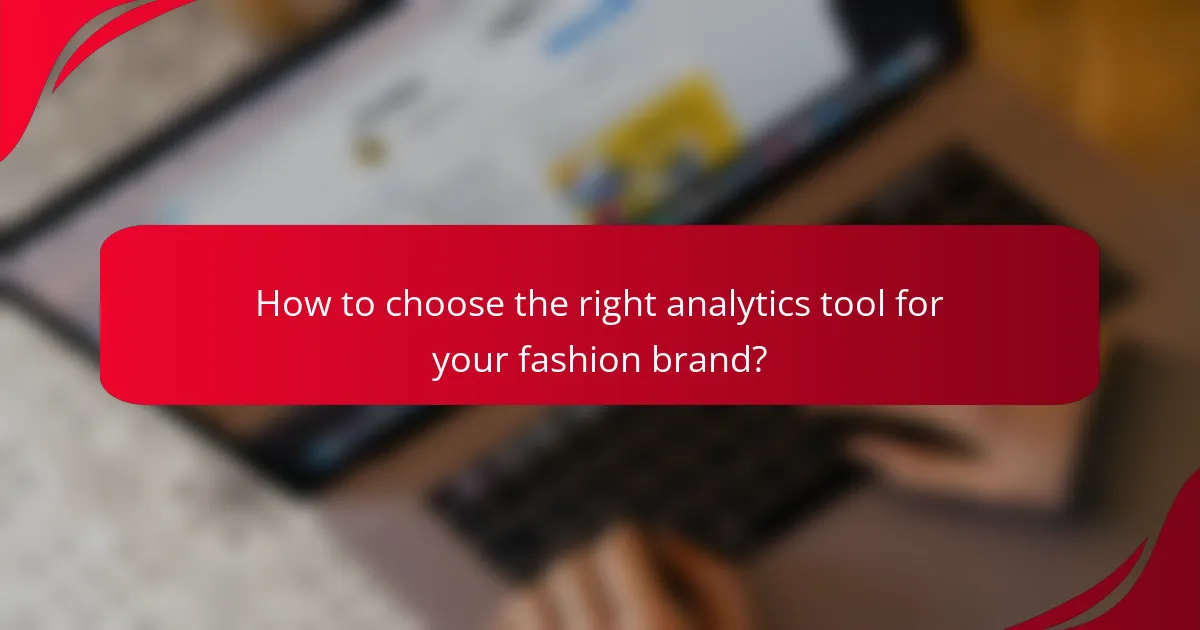
How to choose the right analytics tool for your fashion brand?
Selecting the right analytics tool for your fashion brand involves understanding your specific needs, comparing pricing models, and ensuring integration capabilities with your existing systems. The right tool will provide insights into your SEO performance, helping you make data-driven decisions to enhance your online presence.
Evaluate specific needs
Begin by identifying what metrics are most critical for your fashion brand. Consider factors like website traffic, keyword rankings, and conversion rates. Each brand may prioritize different aspects based on its target audience and marketing strategy.
For example, if your brand relies heavily on social media, you may need a tool that offers social media analytics alongside traditional SEO metrics. Create a list of must-have features to guide your selection process.
Compare pricing models
Analytics tools often come with various pricing structures, including subscription-based, one-time fees, or tiered pricing based on usage. Assess your budget and determine how much you are willing to invest in an analytics solution.
Many tools offer free trials or basic versions, allowing you to test their features before committing. Look for options that provide good value for the features you need, and be wary of hidden costs that may arise as your brand grows.
Assess integration capabilities
Ensure that the analytics tool you choose can seamlessly integrate with your existing platforms, such as e-commerce sites, content management systems, and social media accounts. This integration is crucial for obtaining a comprehensive view of your SEO performance.
Check if the tool supports popular platforms like Shopify or WordPress, and consider how easily it can connect with other marketing tools you may be using. A well-integrated system will save time and improve the accuracy of your data analysis.
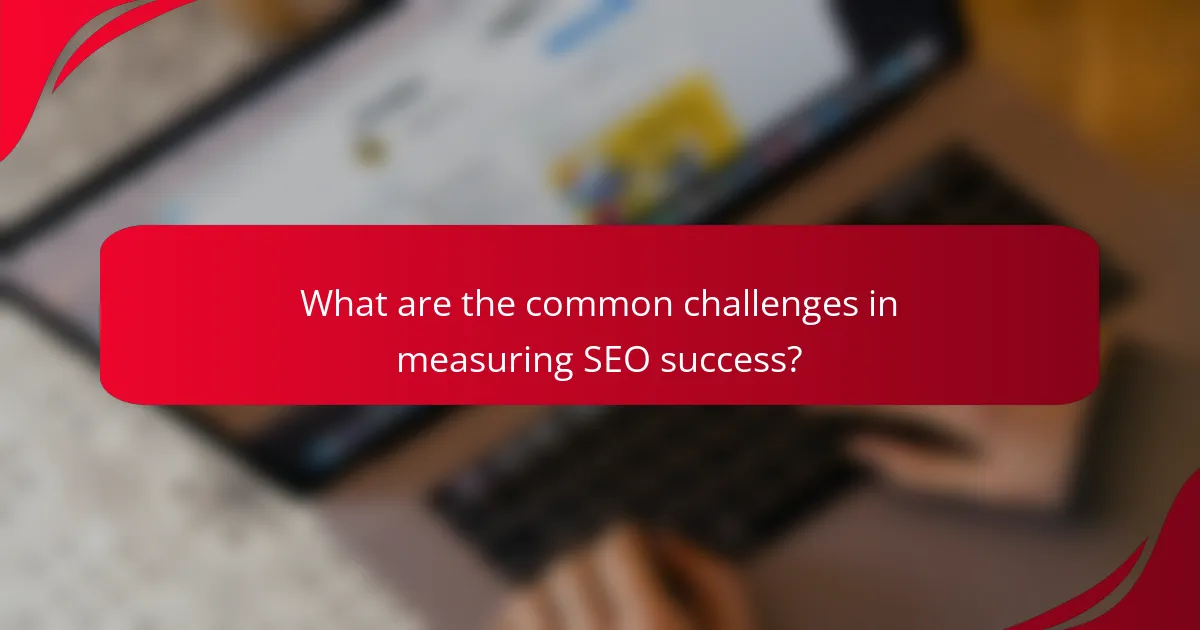
What are the common challenges in measuring SEO success?
Measuring SEO success for fashion brands in America involves several challenges that can obscure the true effectiveness of strategies. Key issues include difficulties in data interpretation, attribution problems, and tracking across multiple channels.
Data interpretation difficulties
Data interpretation is often complicated by the vast amount of information available from various analytics tools. Fashion brands may struggle to discern which metrics are most relevant to their SEO goals, such as organic traffic, bounce rates, or conversion rates. Misinterpreting these metrics can lead to misguided strategies.
To improve data interpretation, focus on a few key performance indicators (KPIs) that align with your brand’s objectives. For instance, prioritize metrics like keyword rankings and organic search traffic to gauge SEO performance effectively.
Attribution issues
Attribution issues arise when trying to determine which marketing efforts are driving traffic and conversions. In the fashion industry, customers often engage with multiple touchpoints before making a purchase, making it difficult to assign credit accurately. This can lead to underestimating the impact of SEO on overall sales.
Implementing multi-touch attribution models can help clarify the role of SEO in the customer journey. Consider using tools that allow for better tracking of user interactions across different channels, which can provide a clearer picture of how SEO contributes to conversions.
Tracking multi-channel campaigns
Tracking multi-channel campaigns is essential for understanding how different marketing efforts work together, yet it presents significant challenges. Fashion brands often use various platforms, such as social media, email, and paid ads, making it hard to track the effectiveness of SEO in isolation.
To address this, utilize integrated analytics platforms that can consolidate data from all channels. This will allow you to see how SEO interacts with other marketing strategies, helping you optimize your campaigns more effectively. Regularly review your tracking setup to ensure it captures all relevant data points across channels.










